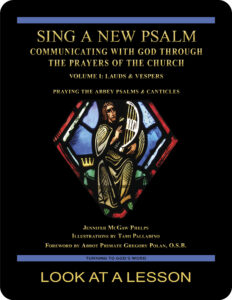blessed
 This Sunday’s reading from the Gospel According to Matthew 5:1–12 (NABRE) contains the Beatitudes, which are an especially profound and difficult section of the New Testament. Each begins with the phrase “blessed are…”. (I might choose to render this as “prosperous are…”.) The grammatical structure of the Beatitudes comes into Greek from Hebrew via the Septuagint translation of the Old Testament. For an example of how this structure shows up in the Old Testament, see Psalm 1:1.
This Sunday’s reading from the Gospel According to Matthew 5:1–12 (NABRE) contains the Beatitudes, which are an especially profound and difficult section of the New Testament. Each begins with the phrase “blessed are…”. (I might choose to render this as “prosperous are…”.) The grammatical structure of the Beatitudes comes into Greek from Hebrew via the Septuagint translation of the Old Testament. For an example of how this structure shows up in the Old Testament, see Psalm 1:1.
This connection to the Old Testament complicates any translation of the Beatitudes because they rely on a Hebrew formula that employs Greek words. The common translation is blessed. Before reading on, pause for a moment to think about what it means for someone or something to be blessed.
Is your answer anything immaterial? If so, you may have missed some of the intended contrast in the Beatitudes. The Hebrew concept of blessedness derives from the Old Testament view that God’s favor and blessing were readily apparent by material success. If you were rich, God had blessed you. I like the translation “prosperous” because it restores this intended tension between material and immaterial in the Beatitudes.
So what’s going on in the Beatitudes? It seems to me that Jesus is redefining prosperity not in present terms but rather in terms of the future. Jesus appears to be suggesting that if we do certain difficult or unpleasant things now, we’ll prosper at some future time.
related topics: beatitude; blessing; favor with God
you also may like Volume I of our Psalms study
 Sing a New Psalm: Communicating with God Through the Prayers of the Church—Volume I: Lauds & Vespers provides an in-depth look at Psalms prayed in morning and evening liturgies. (Volume II, set for publication in 2024, looks at Vigils, Day Prayer & Compline.) The study is based on The Abbey Psalms and Canticles, a translation prepared by the Benedictine monks of Conception Abbey and published by the United States Conference of Catholic Bishops (USCCB). Click on the book’s cover to view a sample lesson.
Sing a New Psalm: Communicating with God Through the Prayers of the Church—Volume I: Lauds & Vespers provides an in-depth look at Psalms prayed in morning and evening liturgies. (Volume II, set for publication in 2024, looks at Vigils, Day Prayer & Compline.) The study is based on The Abbey Psalms and Canticles, a translation prepared by the Benedictine monks of Conception Abbey and published by the United States Conference of Catholic Bishops (USCCB). Click on the book’s cover to view a sample lesson.
 Click on the picture of the statue of Moses with horns (above) to learn more about Lost in Translation. A new entry is archived each Monday. Contact us to receive Lost in Translation by email every week. You may use any of the contact links on our website to ask Matthew a question.
Click on the picture of the statue of Moses with horns (above) to learn more about Lost in Translation. A new entry is archived each Monday. Contact us to receive Lost in Translation by email every week. You may use any of the contact links on our website to ask Matthew a question.
